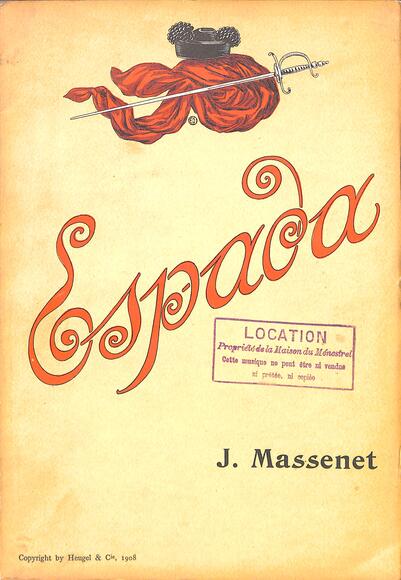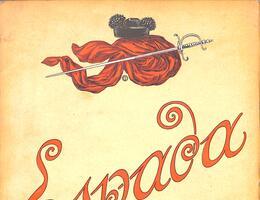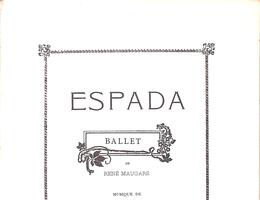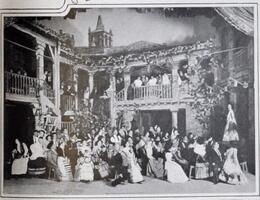Espada

Ballet to a scenario by René Maugars, premiered at the Monte-Carlo Opera on 13 February 1908.
After Le Carillon (1892), Les Rosati (1901) and Cigale (1904), Massenet began composing his last ballet in 1906, based on a verist scenario by René Maugars (pseudonym of Baron Henri de Rothschild). In a posada, all admire Anitra’s beauty and her spirited dance. All, except the famous espada Alvear, who remains indifferent. Anitra challenges him to dance with her; then, reading the cards, she foresees a mortal danger if he does not resolve to love her. But Alvear fears nothing and leaves the posada, offering to meet her the same evening after the bullfight. Worried, Anitra no longer has the heart to dance. When the crowd demands the famous Danse de la Mercédès, however, she has to perform. As the toreros return from the bullfight, she guesses the sad news in their dark expressions. Once again entreated by the customers and pushed by the manager, Anitra, desperately chokes a sob and frantically resumes the Danse de la Mercédès. Massenet began the composition at the end of 1906 and completed it during the summer of 1907. In Espada, the locations of the action, the dramatic intensity, the grim fate of the protagonists all recall La Navarraise and produce the same intoxication and terror. The subtle, continuous sequence of events, their musical quality and the brilliance of the orchestration raise this ballet above the usual stakes of the genre. Premiered on 13 February 1908 with Natacha Trouhanova, Espada continued Massenet's career at the Monte-Carlo Opera, begun in 1902 with the premiere of Le Jongleur de Notre-Dame.



